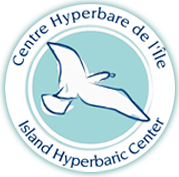Carbon monoxide Delayed Neurological Sequelae
The following information is provided in response to an article published by the CBC 19 June 2019 entitled
Montreal health officials say students need more protection from carbon monoxide
This information is not considered to replace the instructions of a physician but is informational only
Carbon Monoxide Delayed Neurological Sequelae
By Gordon S. Johnson, Jr.
Delayed Neurological Sequelae of carbon monoxide poisoning, called DNS, can result in sufferers getting much worse over weeks after hospital discharge.
One of the most disturbing aspects of carbon monoxide poisoning is the onset of delayed Neurological symptoms. Brain damage after carbon monoxide does not occur at the event but evolves over days and weeks after the exposure. Behavioral and neurologic deficits worsen two to 40 days after the poisoning. Too many carbon monoxide poisoning patients are discharged from the hospital on the day of poisoning with no warning about the potential for a severe relapse of symptoms. DNS is an escalating pathology. The toxic effects of CO poisoning continue to attack the neurological system and particularly the brain, for many weeks after the initial exposure. This syndrome, sometimes called DNS (for Delayed Neurologica Sequelae) can materialize as any neurological or behavioral symptom, including memory loss, confusion, seizures, urinary incontinence, loss of bowel function, disorientation, hallucinations, psychosis and balance and dizziness.
It is believed that DNS is related to “brain lipid peroxidation” which may be a result of carbon monoxide triggering a Nitric Oxide formation in the blood stream.
It is important that the potential for Delayed Neurologica Sequelae in all carbon monoxide exposure cases be explained. The potential for Delayed Neurological Sequelae should be monitored carefully. The longer a patient is unconscious, the more likely DNS may occur. There is also a dramatic increased risk of DNS with patients over 30. The prevalence of Delayed Neurologica Sequelae is significantly understated, as the studies that have looked at neuropsychometric (neuropsychological testing) measures, versus strictly clinical manifestations, the percentage of those with DNS climbs to nearly 50%.
Hyperbaric oxygen (HBO2) therapy’s been shown to reduce the incidence of cognitive and neurological a dysfunction. The efficacy of providing HBO2 beyond the first one to two days is questioned by some authors. However, some evidence exists for the benefit of this treatment. Reports in the literature document markedly improved neurologic status in patients treated as long as 14 months after CO injury.
